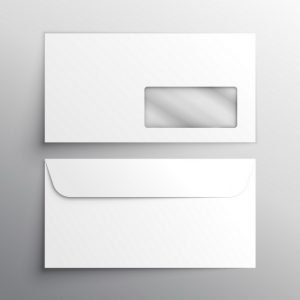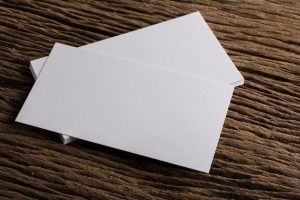
The business environment has mastered integrating business envelopes into the communication strategies of businesses, which has led to higher efficiency of correspondence.
These envelopes, which are called “professional use envelopes,” serve the purpose of creating an image. A business envelope is a package envelope designed to be used with official documents, letters, and promotional envelopes.
Its value is in developing a regulated and orderly communication system and observing the brand identity through customized building blocks (logos and designs).
In the modern and often fast-paced business world, first impression is everything; thus, the right business envelope size and style are as crucial to a professional image as to any other.
In this article, we consider the development of business envelopes that have been and continue to be relevant in effective corporate communication.
1. Standard Envelope Sizes
The current standard envelope sizes, like #10 (4 1/8” x 9 1/2”), #9 (3 7/8” x 8 7/8”), and #6 3/4 (3 5/8” x 6 1/2”), have been the backbone of a lot of the regular business correspondence that is exchanged.
Widely applicable and popular sizes, these measurements fit in with the printing and folding machines found in offices. The #10 envelope is the no.1 choice for letters, invoices, or statements for your customers. Using uniform sizes makes it functional and cost-effective, which helps in improving processes for business.
Business envelope are made to blend effortlessly in a professional environment and give an impression of neatness that emphasizes the need to conform to industry standards.
2. Consider the Content
Deciding on the most appropriate envelope size is just as important as content. It is because content helps ensure a good fit. If your letter is short and you want to use the universally adopted #10 size envelope, give it a neat and somewhat professional look.
As for bulkier documents and marketing content, it will be better to consider the envelope size to be more significant. The size pick must be large enough for neat carrying and without having to fold over it too much without reducing the value of the content.
Striking the right balance between aesthetics and functionality is critical since the aspirational volume of the space should correspond to the nature of the content.

1. Standard Envelope Sizes
The current standard envelope sizes, like #10 (4 1/8” x 9 1/2”), #9 (3 7/8” x 8 7/8”), and #6 3/4 (3 5/8” x 6 1/2”), have been the backbone of a lot of the regular business correspondence that is exchanged.
Widely applicable and popular sizes, these measurements fit in with the printing and folding machines found in offices. The #10 envelope is the no.1 choice for letters, invoices, or statements for your customers. Using uniform sizes makes it functional and cost-effective, which helps in improving processes for business.
Business envelope are made to blend effortlessly in a professional environment and give an impression of neatness that emphasizes the need to conform to industry standards.
2. Consider the Content
Deciding on the most appropriate envelope size is just as important as content. It is because content helps ensure a good fit. If your letter is short and you want to use the universally adopted #10 size envelope, give it a neat and somewhat professional look.
As for bulkier documents and marketing content, it will be better to consider the envelope size to be more significant. The size pick must be large enough for neat carrying and without having to fold over it too much without reducing the value of the content.
Striking the right balance between aesthetics and functionality is critical since the aspirational volume of the space should correspond to the nature of the content.

3. Window or No Window
The choice between a window and a non-window office interior depends on the kind of communicative activity. A commonly used case for a window envelope is for invoices and statements. A transparent window displays the recipient’s address. This simplifies the addressing part of it so that the mailing looks formal and professional, too.
On the other hand, non-window envelopes exude a classic outlook suitable for official letters or marketing materials, having the address either typed or attached separately. Which one should be chosen depends on the individual requirements of the communication, after which the effectiveness of the whole communication increases.
4. Branding and Customization
Within the professional communication domain, branding and business envelope customization have a lot of significance. Envelopes printed with brands’ logos and colors can be excellent gimmicks for corporate identity enhancement. The envelope becomes a brand’s expression and print, which recipients keep at a time.
Personalization is a phenomenon that allows businesses to tailor their envelopes to the company’s overall branding elements, creating a consistent and appropriate look. In this case, stocking the right business envelope size ensures the branding elements are correctly presented.
Through branding and customization, businesses can convey professionalism as well as keep the name of the brand in the mind of the recipients, thereby building brand image.
5. Mailing Regulations
Compliance with the rules regarding mail is a vital factor in enterprise correspondence. Different postal services have their distinct standard sizes for which the customers are charged average postage rates.
It is necessary to understand and abide by these regulations to avoid additional costs of postage and other possible risks, like delivery delays. If your company’s envelope size is satisfactory, according to these postal regulations, your mail will be shipped uninterruptedly and at a lower cost.
It is vital to note that whether you are sending confidential documents or other essential information, you have to stay informed about the specific size constraints determined by the mail services. Lack of attention to detail slows down the mailing and makes business communications less efficient and reliable.
6. Specialty Envelopes

Specialty envelopes provide a tailored and elegant experience of the exciting need for communication. A seemingly classical item, square envelopes come in handy for invitations and unique promo materials, which add a graceful touch to your design.
Legal-size envelopes are designed to accept long documents without bending. They make it possible for the full-size pages to be put into the envelope, and still, it can be sealed.
The use of a specialty envelope enables businesses to address the content and send it in the correct form. The quality of an invitation or marketing material is influenced by the pristine condition of the envelopes, be it a formal address or a beautiful envelope.
This improves impressions because a design such as an innovative envelope signifies attention to detail and creativity in a company’s communication strategy.
Bottomline
The choice of the correct envelope size is essential when it comes to business correspondence in the business environment.
While standard sizes are practical and suitable for everyday use, there are also special envelopes for unique needs. Utilizing thoughtful content, branding, and mailing regulations will ensure the right envelope is selected.
With the right size of envelopes, your mailing will have a better visual appeal yet be practical and efficient in your business mail.
